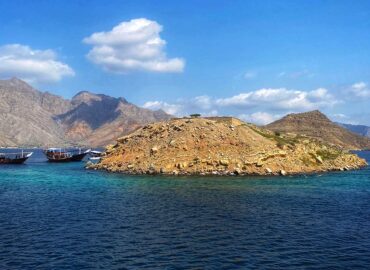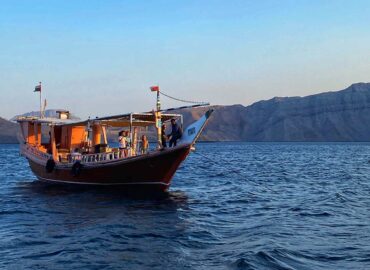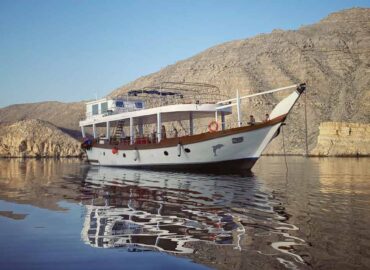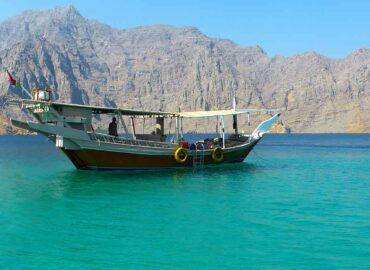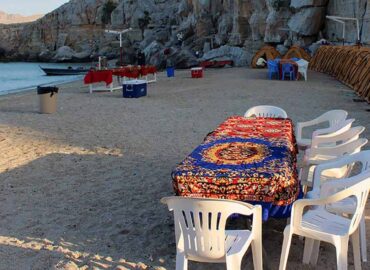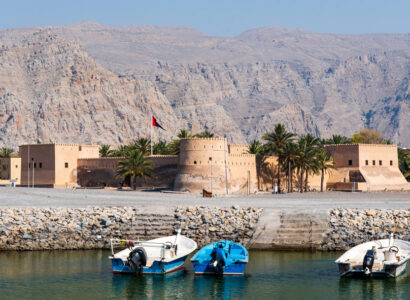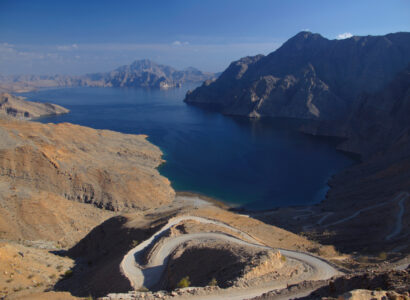Jabal Al Harim

Jabal Al Harim (Arabic: جبل حارم, romanized: Jabal Ḥārim) is the highest peak in the Musandam Peninsula, situated in the Hajar Mountains in the northern part of the Sultanate of Oman. Towering at an altitude of 2,087 meters (6,847 feet), it is a prominent landmark that holds geographical, hydrological, and historical significance. The name “Jabal Al Harim” translates to “Mountain of Women” in Arabic, reflecting the region’s rich cultural history.
Geography
Location and Topography
Jabal Al Harim is located within the Musandam Governorate, approximately 2.5 kilometers southeast of As Sayh, a small farming community known for its terraced fields. The peak boasts a prominence of 1,720 meters (5,640 feet), offering a striking presence in the Ru’us al-Jibal region’s rugged landscape, the Hajar Mountains’ northernmost extension.
The mountain is characterized by its steep slopes, winding pathways, and significant topographic isolation of 158.99 kilometers (98.79 miles), making it a geographical marvel. The summit is currently occupied by a radar station and a military base, restricting public access to the final 400 meters (1,300 feet).
Hydrological Importance
Jabal Al Harim serves as the origin of the Wadi Bih, one of the largest and most vital wadis in the region. This wadi has a drainage basin covering 460–483 square kilometers (180–186 square miles), divided between the territories of Oman and the United Arab Emirates (UAE).
- In Oman: Approximately 26 square kilometers (115.16 square miles).
- In the UAE: Roughly 32 square kilometers (66.53 square miles).
The wadi supports groundwater recharge and sustains agricultural and ecological systems. Its seasonal water flow is critical for communities in both countries, highlighting the mountain’s essential role in regional water resource management.
Historical Significance
Cartographic Records
The prominence of Jabal Al Harim has been documented extensively in historical cartography. During the mid-20th century, British cartographer and diplomat Julian F. Walker meticulously mapped the mountain as part of border demarcation efforts in the Trucial States (modern-day UAE). His work was later published by the UK Ministry of Defense in 1971, featuring Jabal Al Harim in maps scaled at 1:100,000.
These records are preserved in The National Archives, London, and provide valuable insights into the historical geopolitics and geography of the Arabian Peninsula.
Tribal Heritage
The geographical region surrounding Jabal Al Harim has been historically inhabited by the Shihuh tribe, a semi-nomadic group indigenous to the Musandam Peninsula. The Bani Hadiyah section of the Shihuh tribe is particularly notable for its settlement in the fertile valleys of As Sayh and Khanazirah.
The Shihuh have historically adapted to the challenging terrain, engaging in terraced farming and livestock rearing. Their cultural practices, tribal governance, and oral traditions have contributed significantly to the identity of the region.
Biodiversity
The rugged terrain and unique climatic conditions of Jabal Al Harim foster a diverse ecosystem. Studies, such as those documented in the Tribulus Journal of the Emirates Natural History Group, identify a variety of endemic plant species in the region. These species are well-adapted to the arid environment, surviving on limited rainfall and harsh winds.
The mountain is also home to various bird species, reptiles, and small mammals, contributing to its ecological importance within the Ru’us al-Jibal range.
Tourism
Although the summit of Jabal Al Harim is inaccessible to the public due to military restrictions, the surrounding areas offer ample opportunities for exploration and tourism. Visitors to As Sayh can enjoy panoramic views of the Hajar Mountains, traditional Omani villages, and the dramatic cliffs of the Musandam coastline. Popular activities in the region include:
- Hiking: Trails that traverse the foothills of Jabal Al Harim.
- Photography: Stunning landscapes and vistas, particularly at sunrise and sunset.
- Cultural Exploration: Visits to local villages to experience traditional Omani hospitality and customs.
Hydrology of Wadi Bih
Jabal Al Harim is the focal point of the hydrological system feeding Wadi Bih, which is shared between Oman and the UAE. The wadi’s extensive drainage basin significantly contributes to groundwater recharge, mitigating the impacts of arid climatic conditions. Researchers have highlighted the importance of the Wadi Bih Dam, located downstream in the UAE, in enhancing water conservation efforts.
The wadi supports traditional agriculture, including date palm cultivation and small-scale farming, in the surrounding regions.
Alternate Names
Jabal Al Harim is known by various names in historical and modern records, including:
- Jebel Harim
- Jabal al Ḩarīm
- Shaam Peak
- Shuam Peak
These alternate names reflect the mountain’s prominence across different cultures and languages.
Citations
Share this post
KHASAB MUSANDAM TOUR PACKAGES
Have you ever been to Norway? Musandam Khasab dhow cruise tour brings you an opportunity to explore the “Norway Of Arabia”. Book a Khasab dhow cruise and we bet you will fall in love with the beauty of Khasab Musandam.

